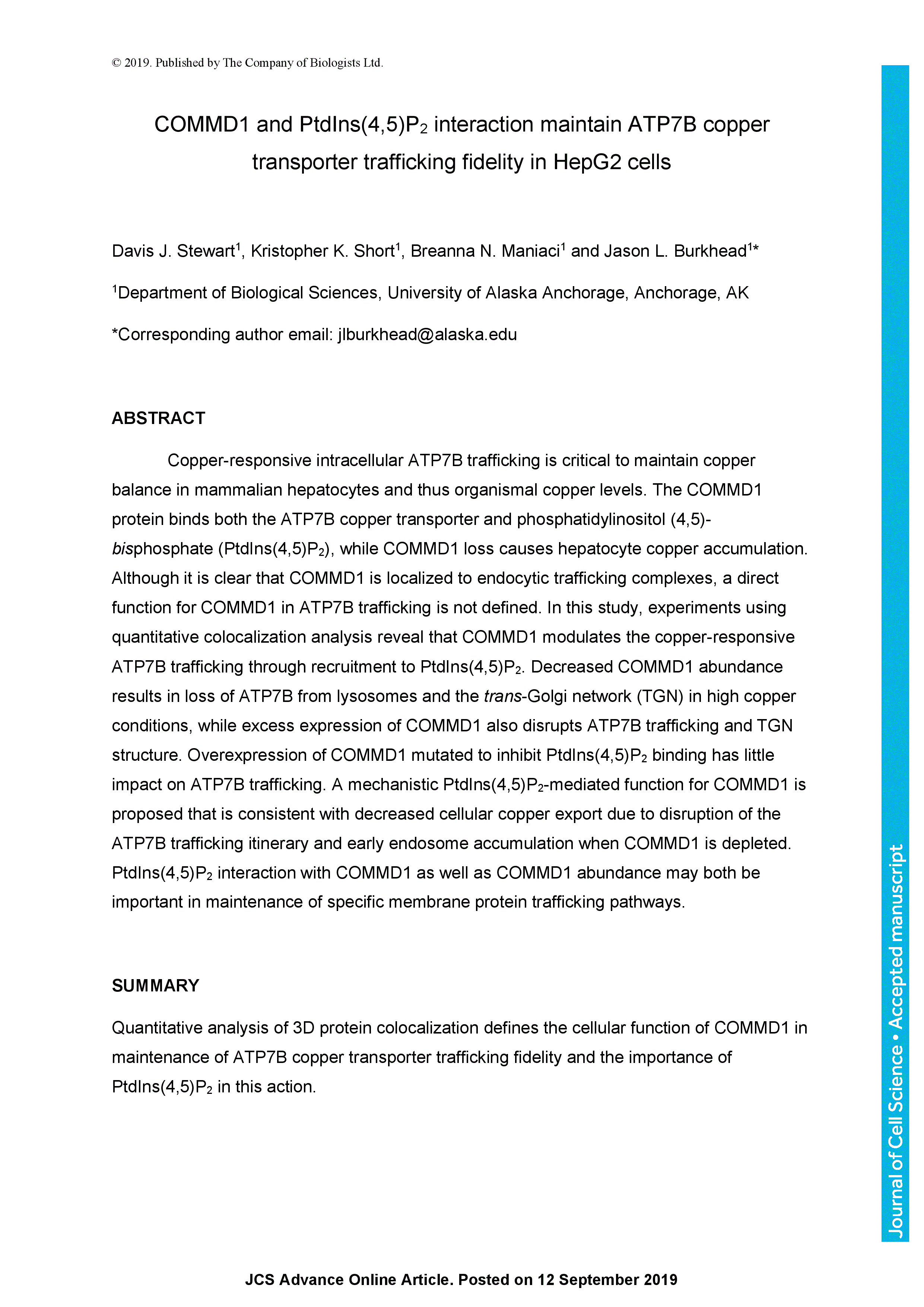Copper-responsive intracellular ATP7B trafficking is critical to maintain copper balance in mammalian hepatocytes and thus organismal copper levels. The COMMD1 protein binds both the ATP7B copper transporter and phosphatidylinositol (4,5)-bisphosphate (PtdIns(4,5)P2), while COMMD1 loss causes hepatocyte copper accumulation. Although it is clear that COMMD1 is localized to endocytic trafficking complexes, a direct function for COMMD1 in ATP7B trafficking is not defined. In this study, experiments using quantitative colocalization analysis reveal that COMMD1 modulates the copper-responsive ATP7B trafficking through recruitment to PtdIns(4,5)P2. Decreased COMMD1 abundance results in loss of ATP7B from lysosomes and the trans-Golgi network (TGN) in high copper conditions, while excess expression of COMMD1 also disrupts ATP7B trafficking and TGN structure. Overexpression of COMMD1 mutated to inhibit PtdIns(4,5)P2 binding has little impact on ATP7B trafficking. A mechanistic PtdIns(4,5)P2-mediated function for COMMD1 is proposed that is consistent with decreased cellular copper export due to disruption of the ATP7B trafficking itinerary and early endosome accumulation when COMMD1 is depleted. PtdIns(4,5)P2 interaction with COMMD1 as well as COMMD1 abundance may both be important in maintenance of specific membrane protein trafficking pathways.
COMMD1 and PtdIns(4,5)P2 interaction maintain ATP7B copper transporter trafficking fidelity in HepG2 cells
Currently Viewing Accepted Manuscript - Newer Version Available
Davis J. Stewart, Kristopher K. Short, Breanna N. Maniaci, Jason L. Burkhead; COMMD1 and PtdIns(4,5)P2 interaction maintain ATP7B copper transporter trafficking fidelity in HepG2 cells. J Cell Sci 2019; jcs.231753. doi: https://doi.org/10.1242/jcs.231753
Download citation file:
Advertisement
Introducing our new Editors

We welcome three new Editors to Journal of Cell Science - Robert Parton, Richa Rikhy and Simon Cook. You can read more about them in the Editorial from our Editor-in-Chief Michael Way.
2024 Journal Meeting 'Diversity and Evolution in Cell Biology'

Registration is open for our 2024 Journal Meeting Diversity and Evolution in Cell Biology, which aims to bring together evolutionary biologists and cell biologists investigating diverse aspects of cellular physiology. Final registration deadline: 3 May 2024.
Workshop: Physics of the Early Embryonic Cell Divisions

Early-career researchers interested in the roles of nuclear lipids, apply now for one of the ten funded places at this Workshop, which will take place 11-14 November 2024. Application deadline: 17 May.
Reasons to submit to Journal of Cell Science

There are many benefits to publishing in Journal of Cell Science - read more about why you should choose JCS or visit our submission page now.
Propose a new Workshop for 2026

We are now accepting proposals for our 2026 Workshops programme. We aim to be responsive to the community and open to novel initiatives, so if you have a new idea for a biological workshop that you feel would work well, please apply. Applications deadline: 19 July 2024.



